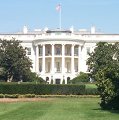WESTERN MOJAVE ENCROACHMENT SOLUTIONS PROJECT FOR THE MARINE CORPS AIR GROUND COMBAT CENTER TWENTYNINE PALMS, CALIFORNIA
The Department of the Navy (DON) manages, trains, and operates on over 4. 5 million acres of land that spans the nation and the globe from coastal and island installations to forests, grasslands, and deserts.
DON leverages the power of nature to protect our ability to train and test, to preserve our infrastructure and capabilities, to empower our Sailors and Marines and civilian workforce.
Navy and Marine Corps training and testing ranges across the Southwest are experiencing severe drought, fire, and flooding impacts that threaten infrastructure, water supplies, and training and testing ranges.
The Marine Corps Air Ground Combat Center (MCAGCC) Twentynine Palms is the Marine Corps’ largest combined-arms, live-fire training facility, encompassing 1,102 square miles of mostly public lands in the Mojave Desert, California.
The Combat Center is divided into 27 range training area management units, each of which may contain training areas, landing fields, targetry, main supply routes, fixed ranges, support areas, expeditionary areas, and safety buffer zones.
Armed forces use the Combat Center to train troops and test equipment.
MCAGCC annually provides training to one-third of the Fleet Marine Force and Reserves Units.
MCAGCC is the southern anchor of the Mojave Desert Sentinel Landscape (> 3,500,000 acres) in Southern California.
This recent designation creates a location-specific opportunity for coordinated investment in solutions for landscape resilience.
The Mojave Desert Sentinel Landscape (Figure 1) was designated in 2024 and covers around 3. 5 million acres in the space between MCAGCC, National Training Center Fort Irwin (NTC Ft.
Irwin), Edwards Air Force Base (Edwards AFB), Naval Weapons Station China Lake (NAWSCL), and Marine Corps Logistics Base Barstow (MCLBB).
The military lands are not within the landscape and comprise of an additional 2. 8 million adjacent acres.
The landscape unites state, Federal, tribal, county, local, and non-governmental partners to tackle challenges from incompatible development and resource vulnerability.
Key objectives include recovering threatened, endangered, and sensitive species; restoring habitat and ecosystem function; and managing watersheds.
Sentinel Landscape Resilience DoD is interested in demonstrating and partnering on watershed scale actions that positively impact:
storm water infiltration, groundwater recharge, soil health, habitat, wildland fire risk reduction, and heat mitigation on installations in the Mojave Desert Sentinel Landscape.
MCAGCC aims to develop and implement innovative solutions that improve watershed function to reduce current and projected resilience degradation, and as well as the associated monitoring (e.g.
sampling, imagery, and data analysis) capabilities that complement the solutions and focus investments.
Recovery and Sustainment Partnership (RASP) Significant natural resources and wildlife exist on MCAGCC.
Such wildlife often inhabit areas on MCAGCC property that are in close proximity to military training and facilities maintenance activities.
Of particular note is the Agassiz’s desert tortoise (Gopherus agassizii), which is listed as threatened under the Endangered Species Act (ESA), and is common but declining across much of the installation.
The US Fish and Wildlife Service (USFWS) serves as an important partner in assisting the Marine Corps with conserving desert tortoise in and around MCAGCC, including monitoring populations, issuing take permits, guiding mitigation measures, and seeking conservation solutions for recovery of the species.
In 2018, the Department of Defense (DoD) and Department of Interior (DOI, which includes USFWS), entered into the Recovery and Sustainment Partnership (RASP) Initiative.
The purposes of the partnership are to support recovery of the ESA-listed species and to increase flexibility for military mission activities.
The desert tortoise is one of the species identified for focus in this partnership, and MCAGCC has the DoD lead for desert tortoise.
MCAGCC and the Palm Springs USFWS Office have jointly developed a voluntary, tiered approach for DoD/USFWS to implement the RASP for desert tortoise.
MCAGCC has elected to participate at a level that would allow broad mission flexibility aboard the installation in return for providing sustained financial support for a robust off-base population-recovery program.
USFWS and MCAGCC entered into a RASP Biological Opinion through ESA Section 7 consultation that provides MCAGCC with greater operational flexibility in exchange for investments in tortoise conservation off-base.
MCAGCC and USFWS partnered with the National Fish and Wildlife Foundation (NFWF) to coordinate RASP investments through the Mojave Desert Tortoise Recovery Implementation Plan (May 2022).
Brief Description of the Anticipated Work:
The Navy is seeking statements of interest that establish a funding framework between USFWS and MCAGCC for drought, fire, and flood encroachment resistance activities within the Mojave Desert Sentinel Landscape and for desert tortoise conservation under the Sentinel Landscape program and RASP.
Please see enclosure 1 for full statement of objectives and enclosure 2 for applicable terms and conditions.
DON leverages the power of nature to protect our ability to train and test, to preserve our infrastructure and capabilities, to empower our Sailors and Marines and civilian workforce.
Navy and Marine Corps training and testing ranges across the Southwest are experiencing severe drought, fire, and flooding impacts that threaten infrastructure, water supplies, and training and testing ranges.
The Marine Corps Air Ground Combat Center (MCAGCC) Twentynine Palms is the Marine Corps’ largest combined-arms, live-fire training facility, encompassing 1,102 square miles of mostly public lands in the Mojave Desert, California.
The Combat Center is divided into 27 range training area management units, each of which may contain training areas, landing fields, targetry, main supply routes, fixed ranges, support areas, expeditionary areas, and safety buffer zones.
Armed forces use the Combat Center to train troops and test equipment.
MCAGCC annually provides training to one-third of the Fleet Marine Force and Reserves Units.
MCAGCC is the southern anchor of the Mojave Desert Sentinel Landscape (> 3,500,000 acres) in Southern California.
This recent designation creates a location-specific opportunity for coordinated investment in solutions for landscape resilience.
The Mojave Desert Sentinel Landscape (Figure 1) was designated in 2024 and covers around 3. 5 million acres in the space between MCAGCC, National Training Center Fort Irwin (NTC Ft.
Irwin), Edwards Air Force Base (Edwards AFB), Naval Weapons Station China Lake (NAWSCL), and Marine Corps Logistics Base Barstow (MCLBB).
The military lands are not within the landscape and comprise of an additional 2. 8 million adjacent acres.
The landscape unites state, Federal, tribal, county, local, and non-governmental partners to tackle challenges from incompatible development and resource vulnerability.
Key objectives include recovering threatened, endangered, and sensitive species; restoring habitat and ecosystem function; and managing watersheds.
Sentinel Landscape Resilience DoD is interested in demonstrating and partnering on watershed scale actions that positively impact:
storm water infiltration, groundwater recharge, soil health, habitat, wildland fire risk reduction, and heat mitigation on installations in the Mojave Desert Sentinel Landscape.
MCAGCC aims to develop and implement innovative solutions that improve watershed function to reduce current and projected resilience degradation, and as well as the associated monitoring (e.g.
sampling, imagery, and data analysis) capabilities that complement the solutions and focus investments.
Recovery and Sustainment Partnership (RASP) Significant natural resources and wildlife exist on MCAGCC.
Such wildlife often inhabit areas on MCAGCC property that are in close proximity to military training and facilities maintenance activities.
Of particular note is the Agassiz’s desert tortoise (Gopherus agassizii), which is listed as threatened under the Endangered Species Act (ESA), and is common but declining across much of the installation.
The US Fish and Wildlife Service (USFWS) serves as an important partner in assisting the Marine Corps with conserving desert tortoise in and around MCAGCC, including monitoring populations, issuing take permits, guiding mitigation measures, and seeking conservation solutions for recovery of the species.
In 2018, the Department of Defense (DoD) and Department of Interior (DOI, which includes USFWS), entered into the Recovery and Sustainment Partnership (RASP) Initiative.
The purposes of the partnership are to support recovery of the ESA-listed species and to increase flexibility for military mission activities.
The desert tortoise is one of the species identified for focus in this partnership, and MCAGCC has the DoD lead for desert tortoise.
MCAGCC and the Palm Springs USFWS Office have jointly developed a voluntary, tiered approach for DoD/USFWS to implement the RASP for desert tortoise.
MCAGCC has elected to participate at a level that would allow broad mission flexibility aboard the installation in return for providing sustained financial support for a robust off-base population-recovery program.
USFWS and MCAGCC entered into a RASP Biological Opinion through ESA Section 7 consultation that provides MCAGCC with greater operational flexibility in exchange for investments in tortoise conservation off-base.
MCAGCC and USFWS partnered with the National Fish and Wildlife Foundation (NFWF) to coordinate RASP investments through the Mojave Desert Tortoise Recovery Implementation Plan (May 2022).
Brief Description of the Anticipated Work:
The Navy is seeking statements of interest that establish a funding framework between USFWS and MCAGCC for drought, fire, and flood encroachment resistance activities within the Mojave Desert Sentinel Landscape and for desert tortoise conservation under the Sentinel Landscape program and RASP.
Please see enclosure 1 for full statement of objectives and enclosure 2 for applicable terms and conditions.
Agency: Department of Defense
Office: Naval Facilities Engineering Command Southwest
Estimated Funding: $68,900
Office: Naval Facilities Engineering Command Southwest
Estimated Funding: $68,900
Obtain Full Opportunity Text:
http://www.grants.gov/
Additional Information of Eligibility:
This Cooperative Agreement is intended to be sole sourced to the National Fish and Wildlife Foundation (NFWF) in accordance with Section 101(d)(2) of the Sikes Act (16 U.S.C.
§670a(d)(2)).
As such, only applications and materials from NFWF will be accepted and evaluated.
All other applications and materials received from others will not be reviewed or accepted.
Full Opportunity Web Address:
http://www.grants.gov/
Contact:
Agency Email Description:
Agency Email:
Date Posted:
2025-04-02
Application Due Date:
Archive Date:
2025-06-01
Social Entrepreneurship
Spotlight
When it Comes to Social Enterprises, Failure is the Best Platform for Innovation

In the world of social enterprises, failure is a cringe-worthy moment nobody wants to talk about. But, social entrepreneurs can benefit from their failures.
